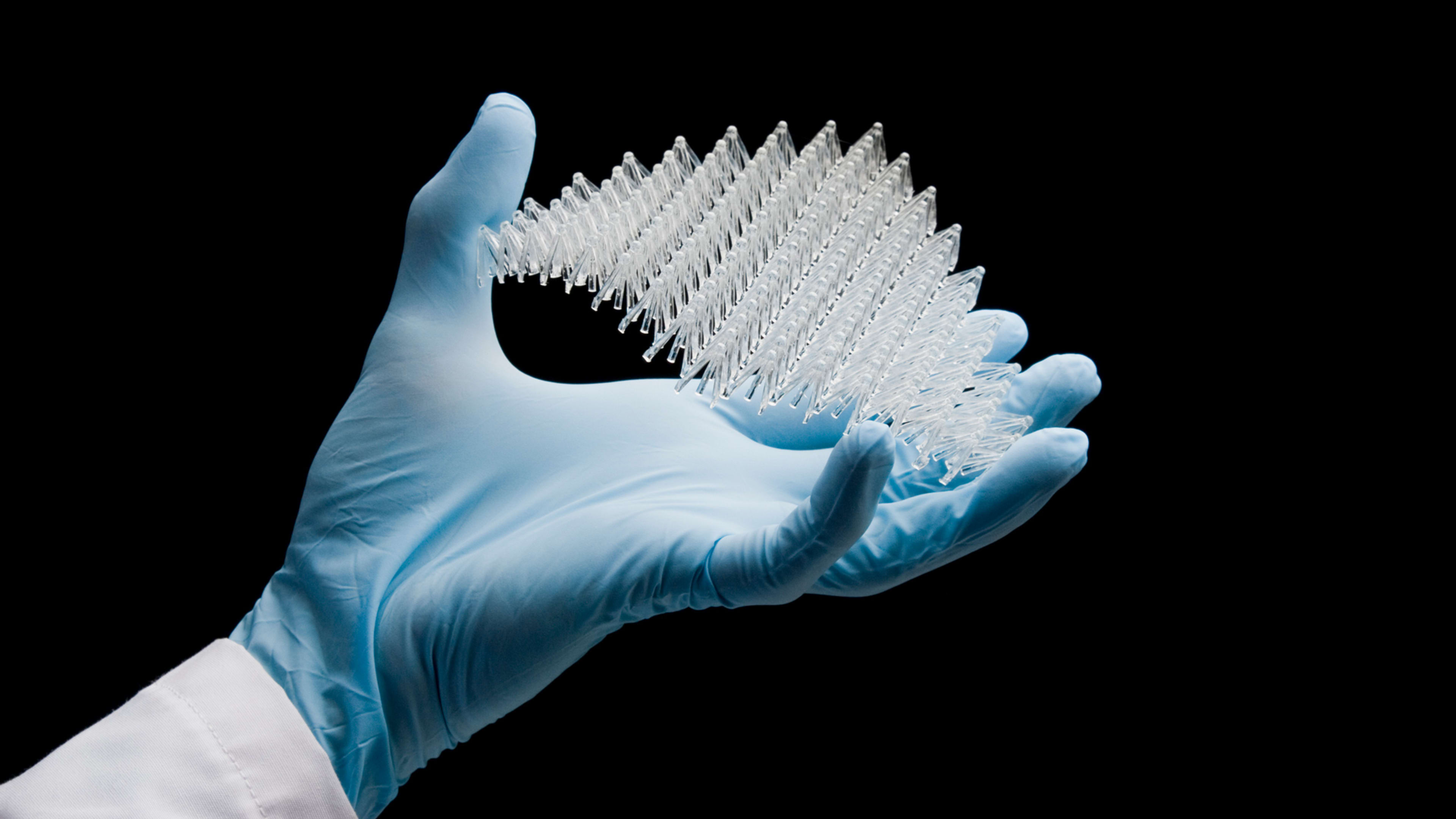A typical bike helmet protects your head with polystyrene foam—the same cheap material used in coolers and old takeout packaging. In a crash, if the helmet fits properly, that foam can reduce the risk of a head injury. But it’s not the most high-tech of options. A new material, innovation, however, could potentially make helmets much more effective.
The squishy new material, developed by scientists at the University of California Santa Barbara, HRL Laboratories, and the U.S. Army Research Laboratory, is a “microlattice” that can better absorb shocks because of its structure. Unlike foam, it can also take repeated hits, making it also well-suited for football helmets. In a study published today in the journal Matter, the researchers reported that the material can absorb up to 27% more energy from an impact than the best foam available now. In repeated hits, the material’s energy absorption efficiency is as much as 48% better than foam.

While some companies are also working on similar materials, the researchers report that their own version absorbs 14% more energy than other microlattice pads, making it more effective than anything that exists on the market now. The researchers argue that it could “revolutionize” helmets for football, bikes, motorcycles, and baseball.
Vicis, a company that spun out of the University of Washington to launch a $950 high-tech helmet, has licensed the technology to bring it to market. That’s not to say it can solve the problems facing a sport like football, where repeated head injuries can lead to chronic traumatic encephalopathy or CTE, and problems linked to CTE, including memory loss, dementia, and even suicide. (In one 2017 study of brains from deceased former NFL players who had experienced mental decline before they died, 110 of 111 players were diagnosed with CTE.)
Other scientists are still trying to understand the long-term effects of playing—and it may be a very long time before engineers create a helmet that can truly eliminate injury. People who ride bicycles may argue, on the other hand, that if cities had safer infrastructure for cyclists, helmets wouldn’t be necessary at all. Still, it seems indisputable that better helmets can help. The researchers now plan to test the technology for helmets used by the military.
Recognize your brand’s excellence by applying to this year’s Brands That Matter Awards before the final deadline, June 7.
Sign up for Brands That Matter notifications here.
